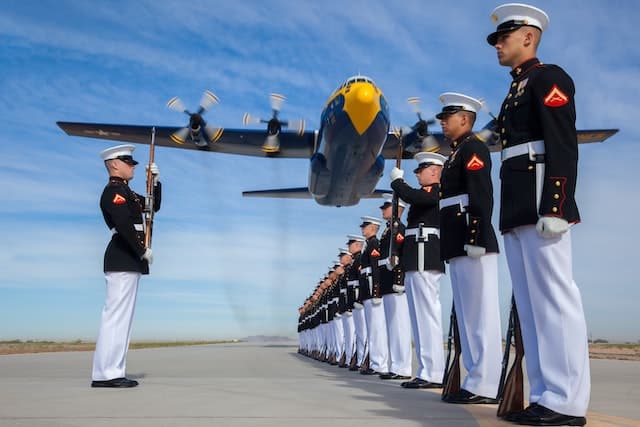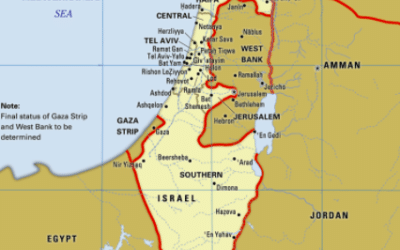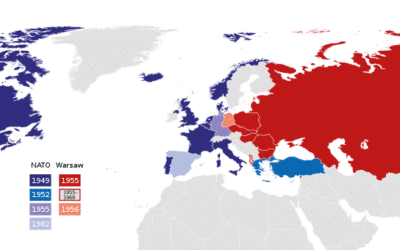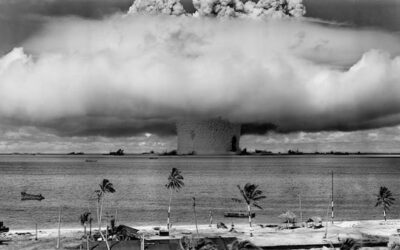When it comes to global power, the size and strength of a nation’s Navy play an undeniably important role. In this insightful look at the 11 strongest and most powerful navies in the world, we delve into the impressive fleets that rule the ocean. From high-tech submarines to versatile aircraft carriers, these naval forces represent the pinnacle of maritime military might. These are the nations that not only possess impressive firepower but also have the strategic insight and technological prowess to assert their influence on the high seas. Whether for defense, peacekeeping, or power projection, a strong navy symbolizes a country’s global standing and potential.
1. United States Navy
The United States Navy is widely recognized as the world’s most powerful and influential naval force. With its rich history and unparalleled capabilities, the U.S. Navy has been a dominant force in protecting American interests and projecting global power.
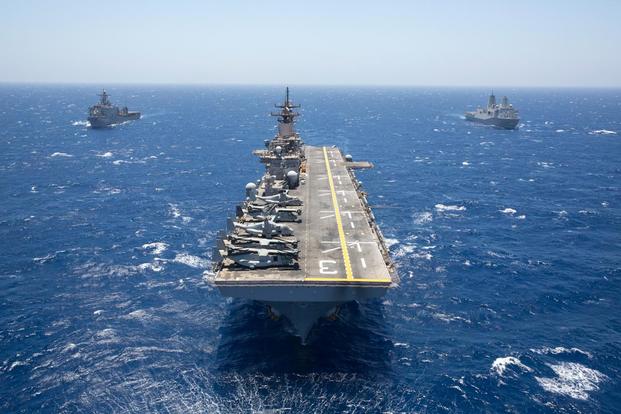
Image: https://www.military.com/
Overview
The U.S. Navy, established on October 13, 1775, is the naval warfare branch of the United States Armed Forces. It is responsible for conducting maritime operations, ensuring the freedom of navigation, and projecting American military power on the high seas. With a steadfast commitment to maintaining global security, the U.S. Navy plays a pivotal role in preserving peace and deterring conflicts.
Fleet Size
The U.S. Navy boasts an impressive fleet size consisting of a diverse range of technologically advanced warships. As of 2023, the U.S. Navy operates 243 ships, including aircraft carriers, submarines, destroyers, cruisers, amphibious assault ships, and more. This formidable fleet allows the U.S. Navy to maintain a strong presence across the world’s oceans and rapidly respond to various threats and contingencies.
Capabilities
The U.S. Navy’s capabilities are unparalleled, making it a force to be reckoned with. Its aircraft carriers serve as mobile air bases, capable of launching and recovering a vast array of aircraft, providing unrivaled power projection capabilities. The Navy’s submarine fleet ensures dominance in underwater warfare, enabling stealthy surveillance, intelligence gathering, and the ability to launch devastating missile strikes. Additionally, the U.S. Navy’s surface ships are equipped with advanced weaponry, radar systems, and defensive measures, making them formidable assets in both offensive and defensive operations.
Notable Operations and Deployments
Throughout its history, the U.S. Navy has been involved in numerous notable operations and deployments, showcasing its global reach and operational effectiveness. From World War II to the ongoing fight against terrorism, the Navy has played a pivotal role in safeguarding American interests and supporting international stability. Examples of notable operations and deployments include the Battle of Midway, the Gulf War, Operation Enduring Freedom, and Operation Iraqi Freedom.
In conclusion, the United States Navy stands as the epitome of naval dominance, with its extensive fleet, cutting-edge capabilities, and a legacy of successful operations. The U.S. Navy’s unwavering commitment to protecting American interests and promoting global security solidifies its status as the strongest and most powerful Navy in the world.
2. Russian Navy
The Russian Navy is a formidable force on the global stage, known for its vast fleet size, advanced capabilities, and notable operations and deployments. In this section, we will delve into an overview of the Russian Navy, its fleet size, and capabilities, as well as some of its most notable operations and deployments.

Overview
The Russian Navy, also known as the Naval Forces of the Russian Federation, is the maritime branch of Russia’s armed forces. It plays a crucial role in safeguarding Russia’s interests, maintaining security in its territorial waters, and projecting power on a global scale. With a rich history dating back centuries, the Russian Navy has evolved into a modern and technologically advanced force.
Fleet Size
The Russian Navy boasts an impressive fleet size, comprised of a wide range of vessels that include submarines, surface ships, and aircraft carriers. Its submarine fleet is particularly noteworthy, as Russia possesses a significant number of both nuclear-powered and conventional submarines. These submarines are equipped with advanced weaponry and cutting-edge technology, allowing them to operate stealthily and effectively.
In addition to submarines, the Russian Navy maintains a formidable surface fleet. This includes cruisers, destroyers, frigates, and corvettes, all equipped with state-of-the-art weaponry and systems. The Russian Navy’s aircraft carriers, such as the Admiral Kuznetsov, further enhance its power projection capabilities, allowing it to operate in far-reaching areas of the world.
Capabilities
The Russian Navy possesses a wide range of capabilities that enable it to fulfill its various missions and objectives. Its advanced submarines, equipped with ballistic missiles and torpedoes, provide a strategic deterrence capability, ensuring the security of Russia’s borders. These submarines can operate silently, making them difficult to detect and track, thus enhancing Russia’s maritime defense capabilities.
Furthermore, the Russian Navy’s surface fleet is equipped with advanced air defense systems, anti-ship missiles, and long-range artillery, enabling it to engage threats effectively. The Navy also maintains a robust naval aviation component, comprising maritime patrol aircraft, helicopters, and fighter jets, which provide crucial support and reconnaissance capabilities.
Notable Operations and Deployments
Over the years, the Russian Navy has been involved in several notable operations and deployments that have showcased its strength and capabilities. One such operation was the deployment of the Russian Navy to the Mediterranean Sea in 2015. This deployment served as a demonstration of Russia’s power projection capabilities and its ability to operate in distant waters.
Another significant deployment was the participation of the Russian Navy in the Syrian Civil War, providing support to the Syrian government. This deployment allowed Russia to showcase its naval capabilities and demonstrate its commitment to its allies.
The Russian Navy has also conducted joint naval exercises with other countries, including China and India, demonstrating its willingness to engage in international cooperation and strengthen diplomatic ties.
In conclusion, the Russian Navy is a force to be reckoned with, possessing a formidable fleet size, advanced capabilities, and a history of notable operations and deployments. Its submarines, surface ships, and aircraft carriers, paired with its strategic deterrence capabilities, make it an important player on the world stage. As the Russian Navy continues to modernize and expand its capabilities, it is likely to remain a significant force in the global maritime domain.
3. Chinese Navy
The Chinese Navy, also known as the People’s Liberation Army Navy (PLAN), is a powerful maritime force that plays a significant role in China’s defense strategy and global presence. Let’s delve into the various aspects that make the Chinese Navy an impressive force to be reckoned with.
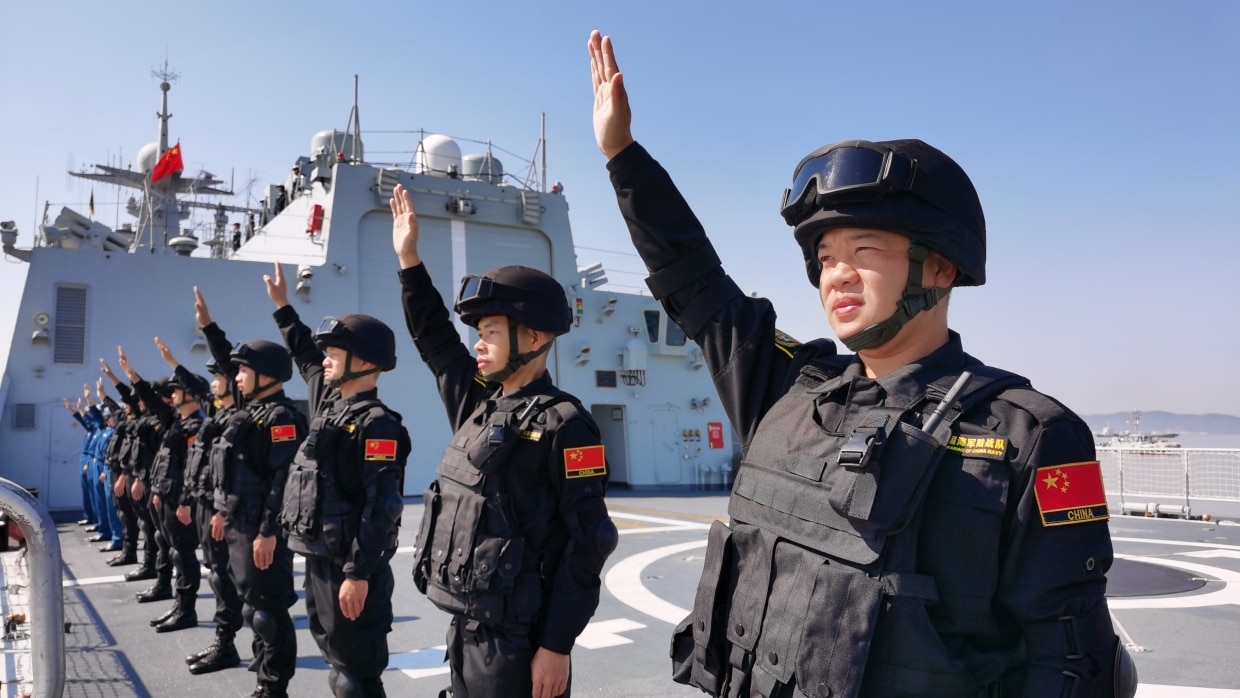
Overview
As one of the fastest-growing navies in the world, the Chinese Navy has undergone a remarkable transformation over the past few decades. It has evolved from a coastal defense force to a blue-water navy capable of operating across the globe. The Chinese government has made substantial investments in modernizing and expanding its naval capabilities, aiming to protect its maritime interests and project power beyond its borders.
Fleet Size
The Chinese Navy boasts a sizeable fleet that includes a wide array of vessels, ranging from aircraft carriers to submarines and surface combatants. With an estimated fleet size of over 350 ships and submarines, it is one of the largest navies globally. Notably, the PLAN has made significant strides in aircraft carrier development, currently operating two aircraft carriers, with more under construction.
Capabilities
The Chinese Navy has developed an impressive arsenal of naval capabilities that enable it to operate effectively in various domains. Its growing fleet of submarines, including both nuclear-powered and conventional submarines, provides the ability to project power and conduct stealthy operations. Additionally, the PLAN possesses advanced surface combatants armed with modern weaponry and air defense systems, enhancing its offensive and defensive capabilities.
Furthermore, the Chinese Navy has made significant progress in developing its naval aviation capabilities. With a growing fleet of carrier-based aircraft, including fighter jets and early warning aircraft, the PLAN can extend its reach and enhance its operational flexibility.
Notable Operations and Deployments
In recent years, the Chinese Navy has been actively involved in conducting operations and deployments beyond its territorial waters. It has participated in multinational exercises, such as the Rim of the Pacific Exercise (RIMPAC) and counter-piracy operations in the Gulf of Aden, showcasing its commitment to international maritime security.
China’s naval presence has also extended to the disputed waters of the South China Sea. Through the construction of artificial islands and the deployment of naval assets, the Chinese Navy has asserted its claims in the region, contributing to heightened tensions and regional concerns.
In conclusion, the Chinese Navy has emerged as a formidable maritime force with a growing fleet and impressive capabilities. Its advancements in aircraft carrier development, submarine fleet, and naval aviation demonstrate its commitment to modernization and expansion. As the Chinese Navy continues to assert its presence in both regional and global waters, it will undoubtedly shape the future of maritime security and strategic dynamics in the Asia-Pacific region and beyond.
4. Indian Navy
The Indian Navy is a formidable force with a rich heritage and a strong commitment to safeguarding the nation’s maritime interests. As the fifth-largest Navy in the world, it plays a crucial role in maintaining peace, ensuring security, and promoting maritime cooperation in the Indian Ocean Region.
Overview
The Indian Navy traces its origins back to the colonial era when the East India Company established the Bombay Marine in 1612. Over the centuries, it has evolved into a modern and technologically advanced naval force. Today, the Indian Navy operates under the motto “Sham No Varunah,” which means “May Varuna (God of Oceans) be auspicious unto us.”
Fleet Size
The Indian Navy boasts an impressive fleet that comprises various types of vessels, submarines, and aircraft. With over 150 ships and submarines, including aircraft carriers, destroyers, frigates, corvettes, and patrol vessels, it has a well-balanced mix of platforms to fulfill its diverse operational requirements. These assets enable the Indian Navy to maintain constant surveillance, project power, and effectively respond to any threats at sea.
Capabilities
The Indian Navy possesses a wide range of capabilities that enable it to perform multiple roles effectively. Its naval aviation wing operates various types of aircraft, including carrier-based fighters, maritime reconnaissance aircraft, and helicopters. These aircraft provide valuable support in anti-submarine warfare, maritime surveillance, and search and rescue operations.
The Indian Navy’s submarine arm is another critical component of its capabilities. With both nuclear-powered and conventionally-powered submarines, it has a potent underwater force that can operate effectively in both offensive and defensive roles. These submarines significantly enhance the Indian Navy’s maritime deterrence and provide a strategic edge in the region.
Notable Operations and Deployments
The Indian Navy has a long history of participating in numerous notable operations and deployments. From counter-piracy missions in the Gulf of Aden to humanitarian assistance and disaster relief operations during natural calamities, the Indian Navy has always been at the forefront of providing support to both national and international causes.
One of the Indian Navy’s most significant achievements was the successful execution of Operation Raahat in 2015. During this operation, the Navy evacuated over 5,600 Indian nationals and around 900 foreign nationals from war-torn Yemen. This operation showcased the Indian Navy’s professionalism, operational readiness, and commitment to the safety and well-being of its citizens.
In addition to its operational commitments, the Indian Navy actively participates in bilateral and multilateral exercises with other navies worldwide. These engagements help enhance interoperability, strengthen maritime security cooperation, and foster goodwill among nations.
In conclusion, the Indian Navy stands as a powerful and capable maritime force dedicated to protecting the nation’s interests at sea. With its extensive fleet, advanced capabilities, and track record of successful operations, the Indian Navy continues to play a pivotal role in maintaining regional stability and promoting peace in the Indian Ocean.
5. British Royal Navy
The British Royal Navy is renowned worldwide for its rich history, steadfastness, and powerful naval capabilities. As one of the oldest and most respected naval forces, it plays a pivotal role in ensuring the security and defense of the United Kingdom’s interests across the globe. In this section, we will explore the overview, fleet size, capabilities, as well as notable operations and deployments of the British Royal Navy.
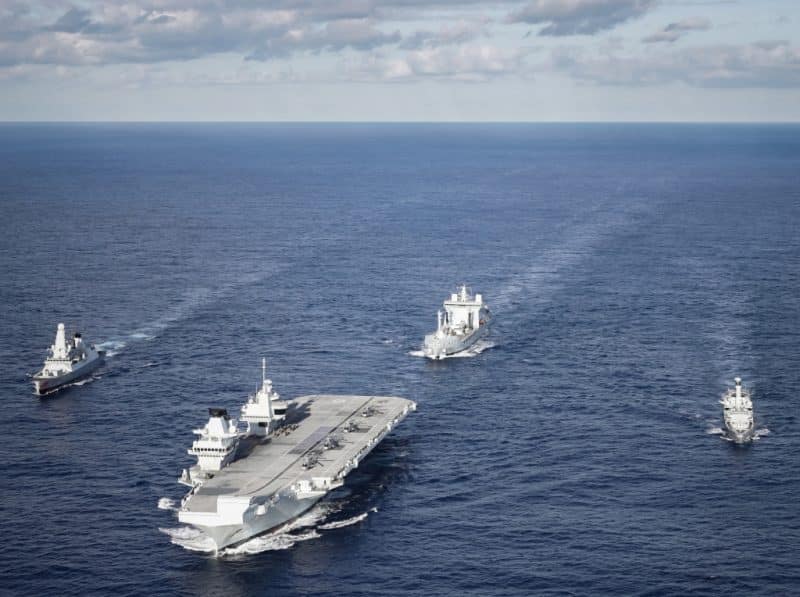
Overview
The British Royal Navy, established in the 16th century, has a long-standing tradition of excellence and professionalism. With its headquarters located in Portsmouth, England, the Royal Navy boasts a distinguished heritage that spans centuries. Today, it remains a crucial component of the British armed forces and is recognized as one of the world’s most formidable naval forces.
Fleet Size
When it comes to fleet size, the British Royal Navy possesses a formidable array of ships and submarines. It boasts a modern and diverse fleet that includes aircraft carriers, destroyers, frigates, submarines, and support vessels. With a focus on maintaining a versatile force, the Royal Navy ensures that it can operate effectively in a wide range of maritime environments.
Capabilities
The British Royal Navy possesses a multitude of capabilities that enable it to project power, protect national interests, and support international security operations. Its aircraft carriers, such as the HMS Queen Elizabeth and HMS Prince of Wales, serve as powerful platforms for launching and supporting air operations. These carriers are capable of carrying a variety of fixed-wing aircraft, helicopters, and unmanned aerial vehicles.
In addition to its aircraft carriers, the Royal Navy maintains a fleet of advanced destroyers and frigates equipped with cutting-edge weaponry and sensors. These vessels provide robust protection and offensive capabilities, ensuring the Royal Navy’s dominance at sea. Moreover, the Royal Navy’s fleet of submarines, including the Astute-class submarines, possesses stealth and firepower, making them some of the most technologically advanced submarines in the world.
Notable Operations and Deployments
Throughout its history, the British Royal Navy has undertaken numerous notable operations and deployments that further highlight its effectiveness and global reach. Whether it’s combating piracy off the coast of Somalia, participating in peacekeeping missions, or supporting international efforts in times of crisis, the Royal Navy consistently demonstrates its commitment to upholding maritime security and providing humanitarian assistance.
The Royal Navy’s involvement in operations like Operation Desert Storm, Operation Telic, and Operation Herrick illustrates its capability to project power and work alongside international partners to achieve common goals. Moreover, the Royal Navy maintains a constant presence through its global deployments, ensuring the protection of vital shipping lanes and contributing to international stability.
In conclusion, the British Royal Navy stands as a testament to both its historical significance and modern capabilities. With a diverse and powerful fleet, the Royal Navy continues to play a vital role in safeguarding the United Kingdom’s interests and maintaining global maritime security. Through its notable operations and deployments, the Royal Navy consistently demonstrates its commitment to international cooperation and the preservation of peace.
6. French Navy
The French Navy, also known as the Marine Nationale, is one of the most formidable naval forces in the world. With a rich history dating back centuries, the French Navy has evolved into a modern and technologically advanced fleet. In this section, we will delve into the overview, fleet size, capabilities, as well as notable operations and deployments of the French Navy.
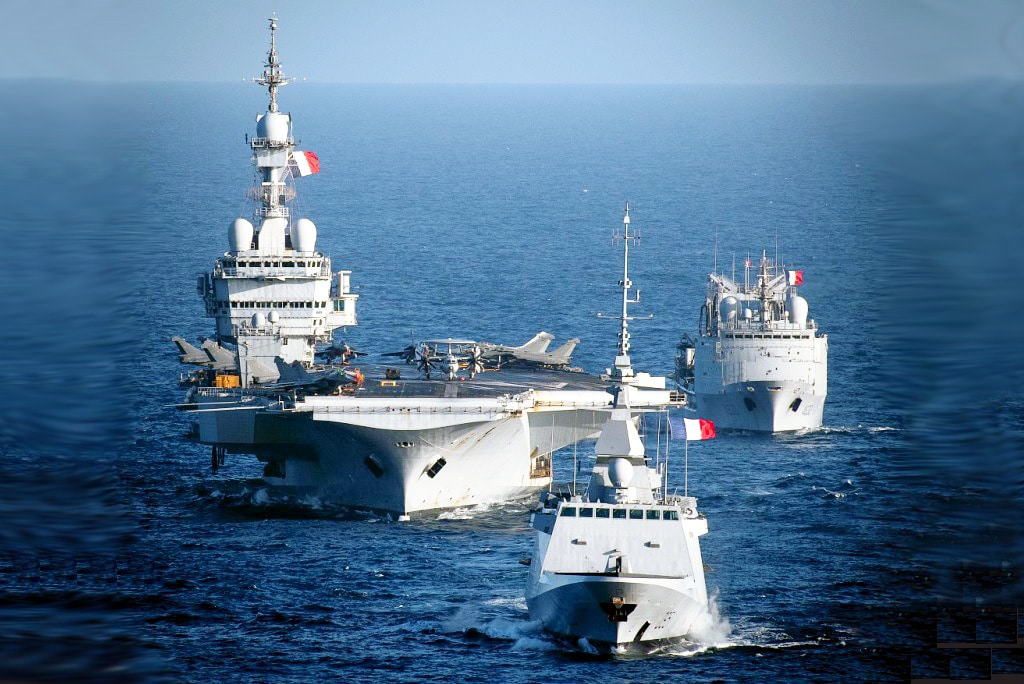
Overview
The French Navy is the maritime component of the French Armed Forces and plays a crucial role in protecting French national interests, both at home and abroad. It operates in various regions around the world, ensuring the security of French territories and contributing to international peacekeeping efforts.
Fleet Size
The French Navy boasts an impressive fleet comprising a wide range of vessels designed for various purposes. At the heart of its fleet are the aircraft carriers, which serve as mobile bases for air operations. These include the flagship Charles de Gaulle, a nuclear-powered carrier that gives the French Navy tremendous strategic reach.
In addition to aircraft carriers, the French Navy operates a fleet of destroyers, frigates, submarines, amphibious assault ships, and support vessels. Each vessel is equipped with state-of-the-art technology and weaponry, enabling the French Navy to project power across the globe.
Capabilities
The French Navy possesses a diverse set of capabilities that allow it to conduct a wide range of military operations. Its advanced surface combatants, such as the Horizon-class destroyers and La Fayette-class frigates, are equipped with advanced radar systems, anti-aircraft missiles, and anti-ship missiles, making them formidable adversaries.
Furthermore, the French Navy’s submarine fleet, which includes nuclear-powered ballistic missile submarines (SSBNs) and attack submarines (SSNs), ensures a potent underwater deterrent and an ability to conduct covert operations. These submarines are equipped with advanced sonar systems, torpedoes, and cruise missiles, providing the French Navy with a significant strategic advantage.
Notable Operations and Deployments
Over the years, the French Navy has been involved in numerous notable operations and deployments worldwide. It has participated in international peacekeeping missions, counter-piracy operations off the coast of Somalia, and humanitarian assistance missions in areas affected by natural disasters.
One of the most significant operations conducted by the French Navy was its involvement in the Libyan Civil War in 2011. French aircraft carriers and surface vessels played a crucial role in enforcing a no-fly zone and conducting air strikes against targets in support of the Libyan rebels.
Additionally, the French Navy regularly conducts joint exercises with allied navies to enhance interoperability and strengthen international partnerships. These exercises provide valuable training opportunities and contribute to maintaining maritime security in regions of strategic importance.
In conclusion, the French Navy is a formidable force with a diverse fleet and advanced capabilities. Its involvement in numerous operations and deployments showcases its commitment to maintaining global security and protecting French national interests. With an unwavering dedication to excellence, the French Navy continues to play a crucial role in the international maritime community.
7. Japanese Maritime Self-Defense Force
The Japanese Maritime Self-Defense Force (JMSDF) is the naval branch of the Japan Self-Defense Forces. As a key player in the Asia-Pacific region, the JMSDF is renowned for its advanced capabilities, robust fleet, and notable operations. Let’s delve into the various aspects that make the JMSDF a formidable force on the global stage.

Overview
The JMSDF was established in 1954 in response to Japan’s post-World War II constitution that prohibits maintaining an offensive military capability. As a result, the JMSDF focuses solely on self-defense and maritime security operations. However, despite these restrictions, the JMSDF has emerged as one of the most advanced and powerful navies in the world.
Fleet Size
The JMSDF boasts an impressive fleet that is well-equipped to defend Japan’s maritime interests. Its fleet comprises a wide range of surface combatants, submarines, naval aviation assets, and auxiliary vessels. At the heart of its fleet are its destroyers, frigates, and corvettes, which form the core of Japan’s naval power projection.
Capabilities
The JMSDF is equipped with state-of-the-art naval technologies, enabling it to effectively carry out its missions. Its fleet incorporates advanced radar systems, anti-ship missiles, air defense systems, and anti-submarine warfare capabilities. Furthermore, the JMSDF operates a fleet of modern submarines, providing Japan with a significant undersea deterrent.
In addition to its impressive hardware, the JMSDF places a strong emphasis on training and operational readiness. Its personnel undergo rigorous training exercises, ensuring they are prepared to handle a wide range of scenarios. The JMSDF also actively participates in joint exercises with other navies, fostering international cooperation and enhancing its operational capabilities.
Notable Operations and Deployments
The JMSDF has been involved in several notable operations and deployments that have showcased its capabilities on the global stage. One such operation is the anti-piracy mission off the coast of Somalia, where the JMSDF has been actively contributing to maritime security efforts since 2009. This deployment has not only protected Japanese vessels but has also contributed to the safety of international shipping lanes.
Additionally, the JMSDF has been involved in humanitarian and disaster relief efforts, both domestically and internationally. Notably, in the aftermath of the devastating earthquake and tsunami in 2011, the JMSDF played a crucial role in providing aid, rescue operations, and logistical support to affected areas.
Furthermore, the JMSDF regularly conducts joint exercises with its allies, such as the United States and Australia, to enhance interoperability and strengthen regional security. These exercises serve as a platform for exchanging knowledge, improving tactics, and building trust among participating nations.
In conclusion, the Japanese Maritime Self-Defense Force (JMSDF) stands as a formidable naval force with its advanced capabilities, substantial fleet size, and notable operational achievements. Its commitment to self-defense, international cooperation, and regional security has solidified its reputation as one of the strongest and most powerful navies in the world.
8. South Korean Navy
The South Korean Navy is a formidable force that plays a vital role in the defense and security of the nation. With a strong fleet, advanced capabilities, and a history of notable operations and deployments, the South Korean Navy has established itself as one of the most powerful navies in the world.

Overview
The South Korean Navy, also known as the Republic of Korea Navy (ROKN), was established in 1945. Its primary mission is to safeguard South Korea’s maritime interests and maintain stability in the region. The Navy is under the command of the Republic of Korea Navy Headquarters and operates under the Ministry of National Defense.
Fleet Size
The South Korean Navy boasts an impressive fleet that includes a wide range of vessels designed for different purposes. The fleet comprises various types of ships, submarines, and aircraft that enhance its maritime capabilities. As of 2021, the South Korean Navy has approximately 166 commissioned vessels, including destroyers, frigates, corvettes, amphibious assault ships, and submarines.
Capabilities
The South Korean Navy is equipped with advanced technologies and capabilities that allow it to effectively carry out its missions. The Navy has been actively modernizing its fleet and incorporating state-of-the-art systems to enhance its combat readiness. It possesses a robust air defense system, anti-submarine warfare capabilities, and surface-to-surface missile systems. Additionally, the South Korean Navy maintains a strong focus on developing and utilizing cutting-edge technologies, such as unmanned systems and cyber warfare capabilities.
Notable Operations and Deployments
The South Korean Navy has been involved in several notable operations and deployments, showcasing its prowess and contributing to global security efforts. One significant operation was the multinational counter-piracy campaign in the Gulf of Aden, where the South Korean Navy successfully protected commercial vessels from pirate attacks. The Navy has also participated in joint military exercises with its allies, including the United States, to enhance interoperability and strengthen regional security.
Another noteworthy deployment was its participation in United Nations peacekeeping operations. The South Korean Navy has deployed its naval forces to support peacekeeping efforts in various regions, including the Gulf of Oman, the Indian Ocean, and the Horn of Africa. These deployments demonstrate South Korea’s commitment to international peace and security.
In conclusion, the South Korean Navy stands as a powerful maritime force, safeguarding South Korea’s interests and contributing to global security. With its modern fleet, advanced capabilities, and involvement in notable operations and deployments, the South Korean Navy continues to play a crucial role in maintaining stability in the region and beyond.
9. German Navy
The German Navy, also known as the Deutsche Marine, is a formidable force that plays a crucial role in maintaining maritime security and safeguarding Germany’s interests. With a rich history and a commitment to excellence, the German Navy has established itself as one of the strongest naval forces in the world.

Overview
As a key component of the German Armed Forces, the German Navy operates in both peacetime and conflict situations, ensuring the protection of Germany’s territorial waters and contributing to international peacekeeping efforts. It has a diverse fleet, advanced capabilities, and highly trained personnel who are prepared to face any challenges that may arise.
Fleet Size
The German Navy boasts a fleet that is well-equipped and constantly evolving to meet modern naval warfare requirements. It comprises a range of vessels, including submarines, frigates, corvettes, minehunters, and support ships. The size and composition of the fleet are constantly reviewed and updated to maintain a technologically advanced and efficient force.
The number of ships in the German Navy is not as large as some other global naval powers, but what it lacks in quantity, it makes up for in quality and technological advancements. The fleet is carefully tailored to suit Germany’s specific defense needs and is capable of carrying out a wide variety of operations.
Capabilities
The German Navy possesses a wide array of capabilities that enable it to fulfill its strategic objectives effectively. It operates highly advanced submarines, such as the Type 212 and Type 214, which are renowned for their stealth and versatility. These submarines play a vital role in intelligence gathering, surveillance, and defense.
In addition to submarines, the German Navy operates modern frigates equipped with the latest radar systems, anti-aircraft and anti-ship missiles, and advanced command and control capabilities. These frigates serve multiple purposes, including safeguarding maritime trade routes, conducting patrols, and participating in international missions.
Furthermore, the German Navy has a strong mine warfare capability, with minehunters and mine countermeasure vessels specifically designed to detect and neutralize sea mines. This capability ensures the protection of Germany’s ports and harbors, as well as the safety of maritime traffic in the event of a crisis.
Notable Operations and Deployments
The German Navy has been actively involved in various notable operations and deployments around the world. It has contributed to international peacekeeping efforts, participated in multinational exercises, and conducted naval patrols in different regions. These operations serve to enhance interoperability with allied navies and demonstrate Germany’s commitment to global security.
German Navy vessels have been deployed to combat piracy off the coast of Somalia, ensuring the safety of merchant ships and safeguarding international trade routes. Moreover, the German Navy has been involved in humanitarian missions, providing assistance during natural disasters and supporting international relief efforts.
In recent years, the German Navy has also participated in NATO missions, including the Standing NATO Maritime Groups, which contribute to deterrence and defense in the North Atlantic region. These deployments highlight Germany’s commitment to collective security and its active role within the alliance.
In conclusion, the German Navy is a highly capable and respected naval force. With its modern fleet, advanced capabilities, and participation in notable operations and deployments, it plays a crucial role in maintaining maritime security and contributing to international peacekeeping efforts. The German Navy’s dedication to excellence and its commitment to protecting Germany’s interests make it one of the strongest and most powerful navies in the world.
10. Italian Navy
The Italian Navy, also known as the Marina Militare, is a formidable force that has a rich history and plays a vital role in maritime security. With its advanced fleet and capabilities, the Italian Navy is a force to be reckoned with in international waters.

Image: https://decode39.com/
Overview
The Italian Navy has a strong presence in the Mediterranean Sea and operates on various fronts to protect national interests and contribute to global security. It is responsible for safeguarding Italy’s maritime borders, ensuring the safety of its people, and projecting power when necessary.
Fleet Size
The Italian Navy boasts a diverse and modern fleet that enables it to carry out a wide range of operations. The fleet includes aircraft carriers, destroyers, frigates, submarines, amphibious assault ships, and various support vessels. This impressive array of assets allows the Italian Navy to maintain a strong presence and respond effectively to different situations.
Capabilities
The Italian Navy’s capabilities are continually evolving to meet the challenges of modern warfare. It has a strong focus on naval aviation, with its aircraft carriers and maritime patrol aircraft providing crucial surveillance and strike capabilities. Additionally, its surface fleet is equipped with advanced weaponry and state-of-the-art sensors, ensuring dominance in naval warfare.
The Italian Navy also places great importance on amphibious operations, with specialized ships and units capable of conducting landing operations and providing support in humanitarian and disaster relief missions. This versatility allows the Italian Navy to adapt to a wide range of scenarios and contribute to international peacekeeping efforts.
Notable Operations and Deployments
The Italian Navy has been actively involved in various operations and deployments worldwide. It has participated in peacekeeping missions, counter-piracy operations, and maritime security patrols in the Mediterranean Sea, the Indian Ocean, and the Gulf of Aden. These operations demonstrate the Italian Navy’s commitment to maintaining stability and safeguarding global maritime trade routes.
One notable operation is Operation Mare Nostrum, launched in 2013 in response to the increasing number of migrants attempting dangerous crossings in the Mediterranean. The Italian Navy played a crucial role in rescuing thousands of people and preventing further loss of life.
The Italian Navy has also been actively involved in NATO missions, supporting the alliance’s efforts to maintain security and stability in the region. Its contributions to international operations highlight the Navy’s commitment to upholding global security and fostering cooperation among nations.
In conclusion, the Italian Navy is a formidable force that possesses a diverse fleet and advanced capabilities. Its commitment to safeguarding national interests and contributing to international security makes it one of the strongest and most powerful navies in the world.
11. Australian Navy
The Australian Navy, officially known as the Royal Australian Navy (RAN), is renowned for its strength and capabilities. As one of the most powerful navies in the world, it plays a vital role in maintaining regional security and safeguarding Australia’s maritime interests. In this section, we will delve into the overview, fleet size, capabilities, and notable operations and deployments of the Australian Navy.
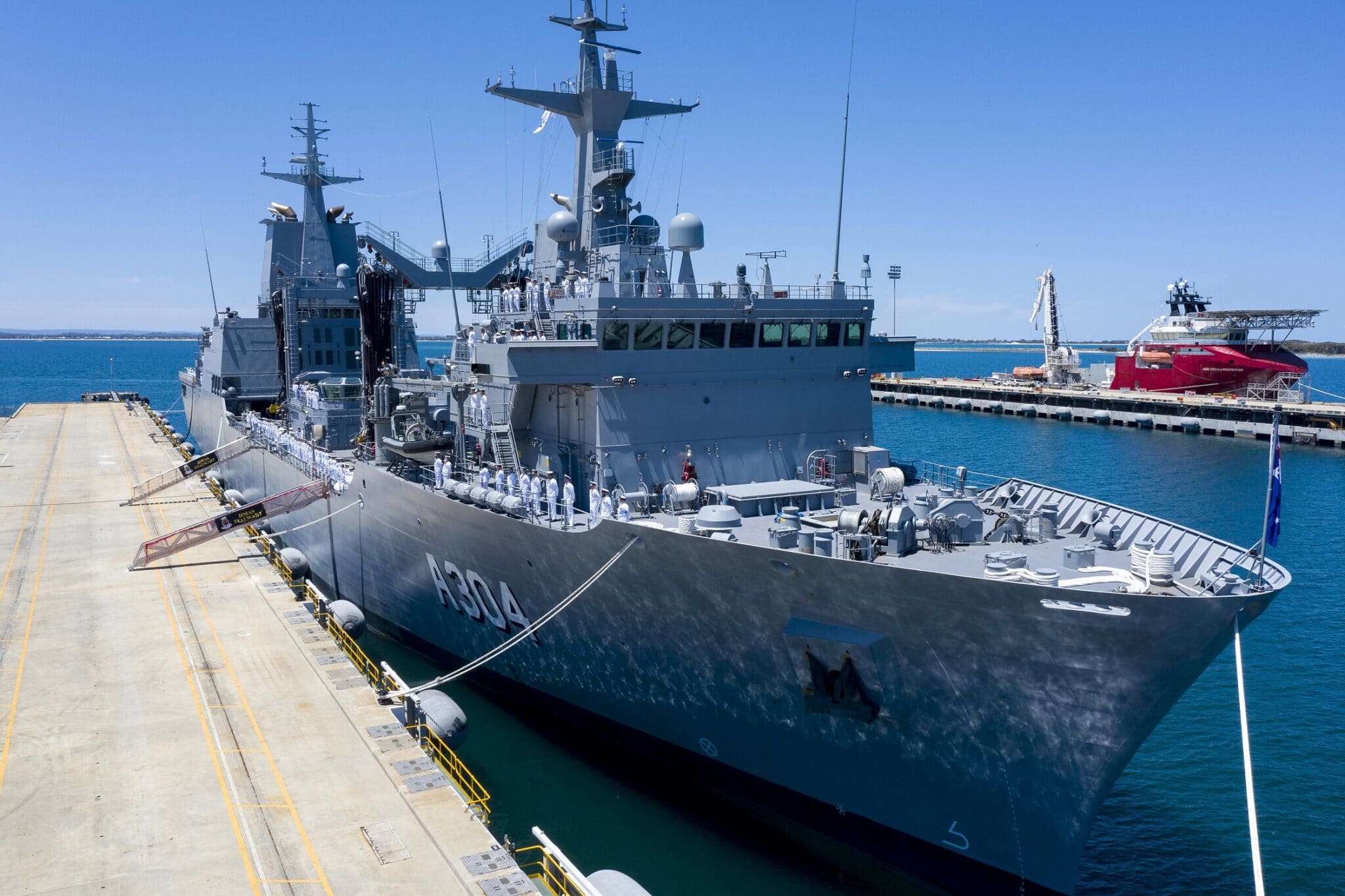
Overview
The Australian Navy has a long and illustrious history, dating back to its establishment in 1911. Over the years, it has evolved into a modern and technologically advanced naval force. With its headquarters in Canberra, the RAN operates across vast distances, patrolling the waters surrounding the Australian continent as well as participating in international operations.
Fleet Size
The fleet size of the Australian Navy is impressive, consisting of a diverse range of vessels. At the core of its fleet are its major surface combatants, including guided-missile destroyers and frigates. These advanced warships are equipped with state-of-the-art systems and weaponry, enhancing the Navy’s offensive and defensive capabilities.
In addition to its surface fleet, the RAN boasts a formidable submarine force. Its fleet of Collins-class submarines provides a strategic edge, allowing for stealthy and effective operations both in peacetime and during conflicts. These submarines have proven instrumental in enhancing Australia’s maritime surveillance and defense capabilities.
Furthermore, the Australian Navy operates a variety of auxiliary vessels, such as replenishment ships, amphibious transport docks, and patrol boats. These vessels provide critical support functions and enable the Navy to conduct a wide range of missions effectively.
Capabilities
The Australian Navy possesses a wide range of capabilities that enable it to fulfill its mandate effectively. With a keen focus on maritime security, its capabilities include anti-submarine warfare, air defense, maritime surveillance, and amphibious operations.
The RAN’s anti-submarine warfare capabilities are particularly noteworthy. Equipped with advanced sonar systems and torpedoes, the Navy can effectively detect and neutralize underwater threats. This capability is crucial for protecting Australia’s maritime interests and maintaining regional stability.
Moreover, the Australian Navy’s air defense capabilities are formidable. With the deployment of advanced surface-to-air missile systems and integrated air defense networks, the RAN can effectively defend against aerial threats, including missiles and aircraft.
Notable Operations and Deployments
The Australian Navy has a rich history of participating in notable operations and deployments both at home and abroad. It has been involved in international operations, such as peacekeeping missions, counter-piracy efforts, and humanitarian assistance and disaster relief operations.
One of the most prominent examples of the Australian Navy’s involvement in international operations is its contribution to the fight against terrorism. The RAN has actively participated in multinational efforts to counter piracy and terrorism in the waters surrounding the Middle East and East Africa.
The Navy has also played a crucial role in safeguarding Australia’s maritime borders. It conducts patrols and surveillance operations to detect and deter unauthorized maritime activities, ensuring the integrity and security of Australia’s vast coastline.
In summary, the Australian Navy is a force to be reckoned with. With its impressive fleet size, diverse capabilities, and participation in notable operations and deployments, it stands as one of the strongest and most powerful navies globally. The RAN’s commitment to maritime security, regional stability, and national defense underscores its importance in Australia’s defense strategy.
Conclusion
In conclusion, several countries with formidable naval power dominate the global naval landscape. From aircraft carriers to submarines, these navies have invested significantly in building and maintaining strong maritime capabilities. Among the top contenders are the United States Navy, which boasts a vast fleet and advanced technology, and the Russian Navy, known for its robust submarine force. Other notable navies include those of China, India, and the United Kingdom, each with its own unique strengths.
It is essential to understand that naval power not only serves as a means of defense and deterrence but also plays a crucial role in promoting stability and safeguarding global trade routes. The presence of a strong navy enables a country to project power and protect its national interests, both domestically and internationally.
As global dynamics continue to evolve, it is crucial for countries to adapt their naval capabilities to meet emerging threats. The continuous investment in research and development, training, and modernization efforts will be vital in maintaining and enhancing naval superiority. This will ensure that these powerful navies can swiftly respond to various challenges, from safeguarding territorial waters to participating in humanitarian missions.
Related Articles
10 Best Handguns for Self-Defense
When it comes to...
The Truth About Sanctions: Why Don’t They “Work”?
In 2022,...
History of Israel-Palestine Conflict
Israel and...
After the WAR initiated by HAMAS on October 7th, the Middle East will not be the same
On the -th of...
The Israeli army is prepared for an offensive on the Gaza Strip, involving attacks from “air, sea, and land.”
The IDF (Israel...
War in Israel: Current Developments – Video
Rafah...
Russia vs USA: Who Would Win in a Potential War?
In the...
NATO vs China: Who Would Win in a Potential War?
In the realm of...
11 Best Assault Rifles in the World
Welcome to a world...
Yevgeny Prigozhin (Wagner founder) is dead
According...
What You Need to Know About Joining NATO
Has any country...
Terrifying Realities of a Potential Nuclear War
The Devastating...
What to Do in Case of a Nuclear Attack
What to Do in Case...
The Most Powerful Nuclear Weapons
The sheer power...
Understanding the Nature of War – The Clash of Wills
War is the...
Ukrainian Defense Forces Celebrate One-Year Anniversary of Kherson Region Liberation
Around one year...
Prigozhin First Video Speech After Unsuccessful Uprising
Following a recent...
11 Best Sniper Rifles in the World
Important Factors...
What is Russia saying about the war in Ukraine, Episode 1
Did you ever...
13 Most Powerful Weapons in the World
Weapons of immense...
